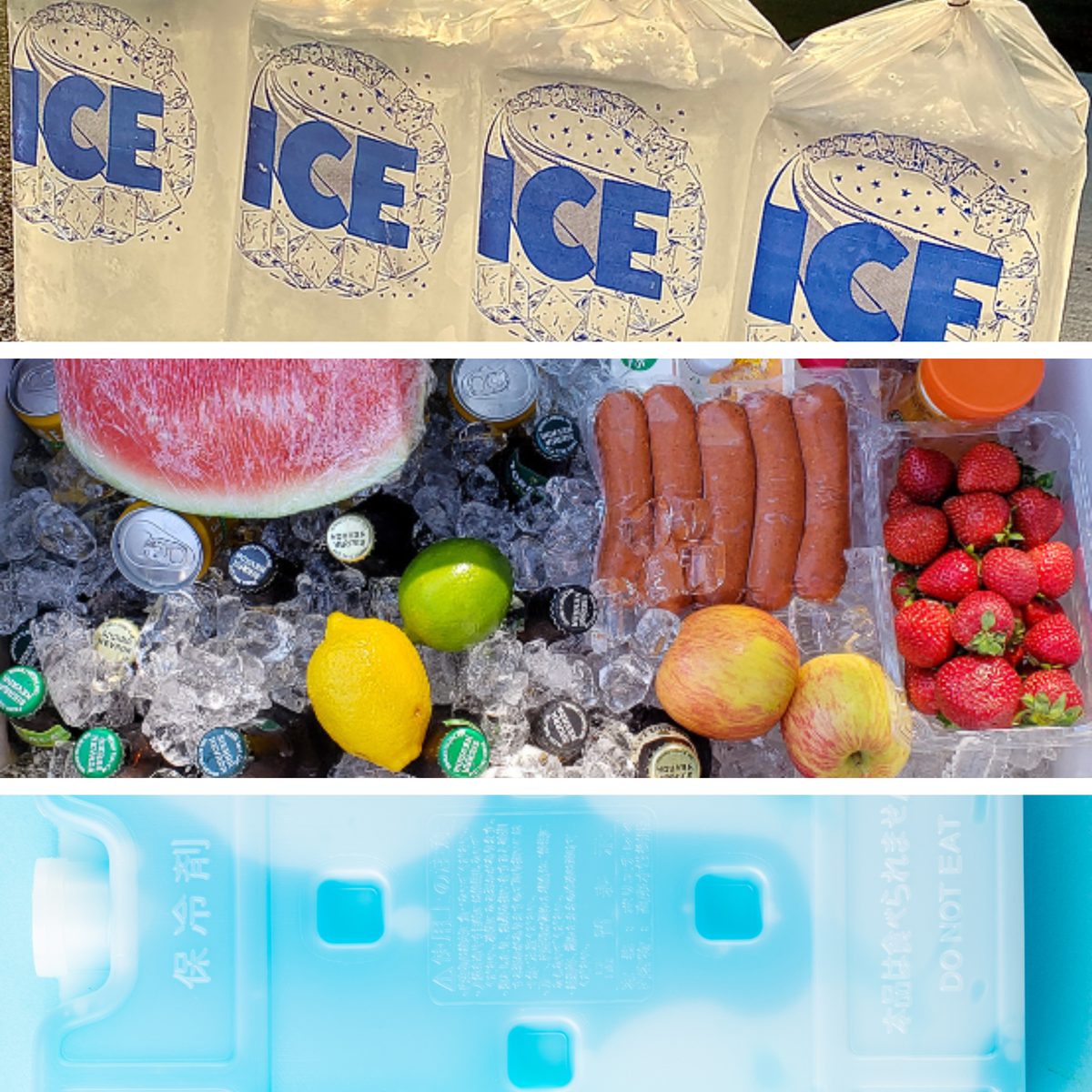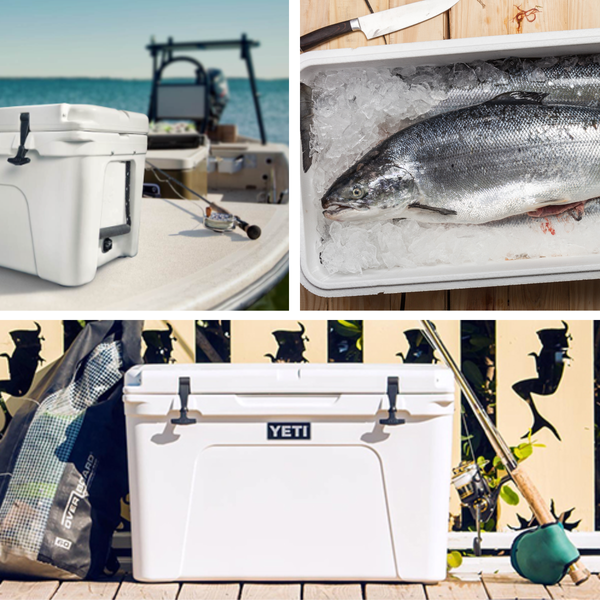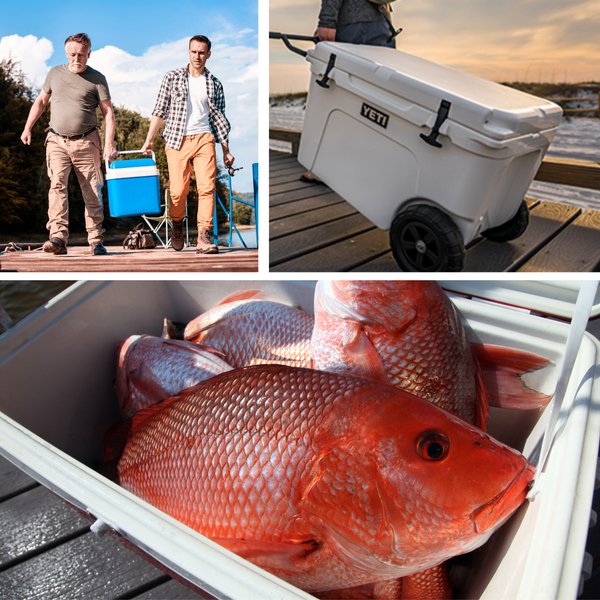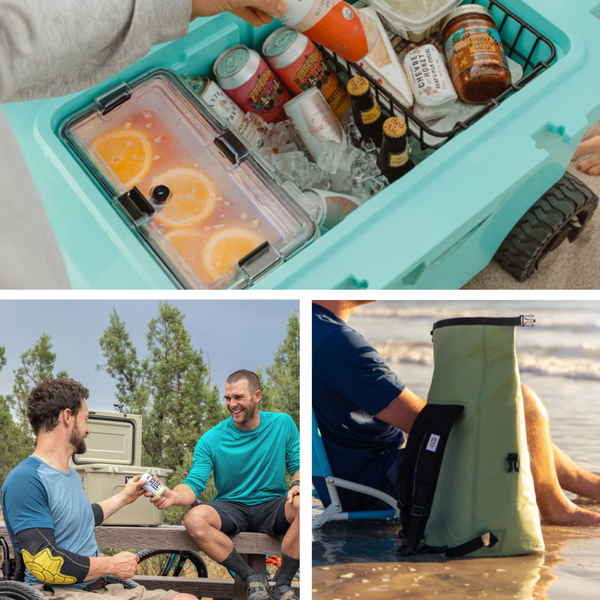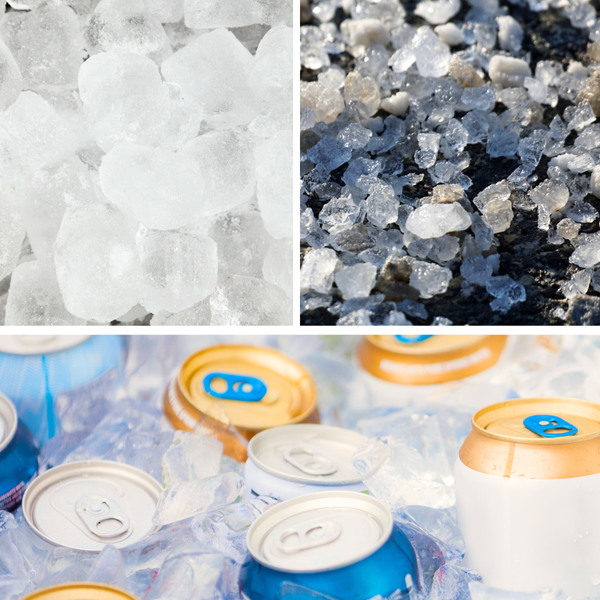Key Takeaways:
- Understanding the science of cold air and its behavior is crucial in determining whether ice should be placed on the top or bottom of a cooler.
- Properly packing a cooler with ice and perishables can significantly affect the temperature maintenance and food safety during outings.
- Utilizing a combination of ice types and packing techniques can optimize cooler performance in various conditions.
The Great Cooler Debate: Top or Bottom?
When it comes to packing a cooler for a day out in the summer heat or a camping trip, the question often arises: does ice go on top or bottom of cooler? The answer isn't as straightforward as one might think. It involves understanding how cold air behaves and how it can be best utilized to keep your food cold and drinks cold.
The Science of Cold Air: Sinks or Rises?
It's a well-known fact that cold air sinks and warm air rises. This principle is key to deciding how to pack a cooler. When you place ice on the bottom of the cooler, the cold air falls from the ice and envelops the items above it, keeping them chilled. Conversely, if ice is placed on top, the cold air it generates will not effectively reach the items at the bottom.

Ice Placement for Food Safety
Food safety is paramount when packing perishables. The right cooler packing strategy can prevent harmful bacteria from spoiling your food. By placing ice blocks at the bottom of the cooler, you create a cold base that helps maintain low temperatures, ensuring that your food stays within safe temperature ranges.
Cooler Temperature Maintenance
Maintaining a consistent cooler temperature is essential for keeping your food and drinks cold for a longer period. Using several ice packs or block ice at the bottom of the cooler can help sustain the desired temperature, as these larger ice forms have a lower freezing point and melt slower than regular ice or cubed ice.
The Role of Ice Type in Cooler Packing
Not all ice is created equal when it comes to cooler packing. An ice pack or block ice, for example, has a larger surface area and lasts longer than cubed ice, making it ideal for the bottom layer of a cooler. On the other hand, cubed ice or crushed ice can fill in the gaps between items, reducing as little empty space as possible, which is crucial for maintaining cooler colder temperatures.
Gel Ice Packs vs. Regular Ice
Reusable ice packs, such as gel ice packs, can be a great alternative to regular ice. They don't create a watery mess as they thaw, and their compact size makes them perfect for filling in small gaps around food space. When used in conjunction with block ice, gel packs can help keep the entire cooler at a uniform temperature.

The Benefits of Dry Ice in Coolers
Dry ice is the frozen form of carbon dioxide and is significantly colder than regular ice. When used in a cooler, dry ice can keep frozen food at freezing point for a much longer period. However, it requires careful handling and should not come into direct contact with food or skin.
Maximizing Ice Retention in Hot Weather
In hot weather, the challenge of keeping a cooler colder for a longer period becomes even more significant. Using a combination of block ice at the bottom and filling the remaining space with cubed ice or gel ice packs can help maintain a low temperature inside the cooler, even in the summer heat.
The Art of Cooler Layering
Layering items in your cooler can make a significant difference in how well they stay cold. Starting with a layer of block ice or several ice packs at the bottom, followed by frozen food, and then covering it with more ice ensures that cold air falls and circulates around the items, keeping them chilled.
Cooler Packing Strategies for Drinks
When it comes to keeping drinks cold, the strategy might differ slightly. Since drinks are often removed from the cooler more frequently, placing them on top of a base layer of ice can make them more accessible while still benefiting from the cold air that sinks from the ice below.

The Concept of Sacrificial Ice
Sacrificial ice refers to a layer of ice that is expected to melt faster, usually placed at the top of the cooler. This ice helps absorb the warm air that enters the cooler when opened, protecting the ice below and keeping the cooler temperature stable.
Creating a Cooler Map for Efficient Packing
A cooler map is a planned layout of where each item should be placed within the cooler for optimal cooling. By creating a cooler map, you can ensure that items that need to stay the coldest are closest to the ice, while items that can tolerate slightly higher air temperatures are placed further away.
The Importance of Pre-Chilling Your Cooler
Pre chilling your cooler before packing can extend ice retention significantly. A cooler that starts at room temperature will cause the ice to melt faster as it cools down the interior. By pre chilling the cooler, you ensure that the ice starts working to keep your items chilled rather than cooling the cooler itself.
Selecting the Right Cooler for Your Needs
The best cooler for your outing depends on several factors, including the duration of your trip, the amount of food and drinks you're carrying, and the environmental conditions. High performance coolers, like Yeti coolers, offer superior ice retention and durability, making them suitable for longer trips in harsher conditions.

The Two-Cooler System: Food vs. Drinks
Using two coolers—one for food and one for drinks—can be an effective way to pack a cooler. This system allows you to open the drinks cooler more frequently without affecting the temperature of the food cooler, which should be opened as infrequently as possible to maintain its cooler inside temperature.
Cooler Size Matters: Large vs. Small Cooler
The size of your cooler plays a crucial role in how you pack it. A small cooler is perfect for lunch boxes or short trips, while a large cooler is better suited for extended outings. The key is to fill the cooler completely, as empty space can lead to faster ice melt and a warmer cooler overall.
The Role of Watertight Containers in Cooler Packing
Watertight containers can prevent your food from becoming soggy as the ice melts. They also help organize the cooler and can act as an additional barrier to keep items cold, especially when packed with sacrificial ice or gel packs.
Avoiding a Watery Mess: Managing Ice Melt
Managing ice melt is crucial to prevent a watery mess in your cooler. Using a combination of dry ice, block ice, and watertight containers can help minimize the amount of melted water, keeping your items cold and dry.

The Impact of External Temperatures on Cooler Efficiency
External temperatures, such as leaving a cooler in a hot car, can drastically affect the cooler's ability to stay cold. It's essential to keep the cooler in a shaded area or covered with insulating materials to protect it from the hot weather and maintain its internal temperature.
The Frequency of Opening the Cooler
The more you open the cooler, the more warm air enters, and the faster the ice will melt. To keep the cooler colder for a longer period, minimize the number of times you open it and quickly close it after retrieving items.
Food Prep and Cooler Packing
Prepping your food before packing can help maintain cooler temperature. Pre-chilled or frozen items act as additional cooling agents, while hot dogs or other food that can be packed in smaller containers take up less space and can be easily arranged around the ice.
The Importance of Fresh Ice
Using fresh ice, rather than ice that has started to melt, is crucial for cooler packing. Fresh ice has a lower temperature and will last longer, keeping your cooler colder for an extended period.

The Myth of Hot Water Freezing Faster
There's a common misconception that hot water freezes faster than cold water, which might lead some to believe that using hot water to make their own ice could be beneficial. However, this is not practical for cooler packing, as the energy required to cool the hot water would initially reduce the cooler's overall temperature.
The Best Way to Pack a Cooler for a Long Trip
For a long trip, the best way to pack a cooler involves using a combination of pre-chilled items, block ice at the bottom, and filling the remaining space with cubed ice or gel ice packs. This method ensures that the items stay chilled for the longest period possible.
The Versatility of Ice Sheets in Cooler Organization
Ice sheets are a game-changer when it comes to keeping your cooler organized and your items chilled. Unlike traditional ice cubes, which can be irregular and create empty spaces, ice sheets provide a flat, even surface that can be wrapped around food or laid across the bottom of a cooler. This maximizes contact with the items you're trying to keep cold, ensuring they stay cool more effectively. Ice sheets are particularly useful in a lunch box, where space is at a premium, and you need to keep your meal at the right temperature until it's time to eat.
Moreover, ice sheets are often reusable, making them an eco-friendly option for regular cooler users. They can be pre-chilled in the freezer and then placed in the cooler to create a cold environment that lasts. Because they cover more surface area, they can help maintain the cooler's internal temperature for a longer period, which is essential when you need your cooler to stay cold throughout an entire day out. Whether you're packing a one cooler for a picnic or a larger one for a camping trip, ice sheets can help keep your perishables fresh and drinks refreshingly cool.

The Strategy of Using an Ice Block for Extended Cooling
An ice block is a solid choice for those who need their cooler to stay cold for an extended period. Unlike ice cubes, which have a larger surface area and melt more quickly, an ice block takes much longer to thaw, keeping the cooler's contents chilled for a more extended period. This is particularly beneficial when you're planning to keep the cooler open frequently, as the ice block's resilience to melting helps maintain a low temperature even with the repeated exposure to warmer outside air.
To make the most of an ice block, it's best to start with a clean cooler that has been pre-chilled. This initial step will help the ice block maintain its solid state for as long as possible. When packing, place the ice block at the bottom of the cooler, as this will take advantage of the fact that cold air sinks, keeping the entire cooler longer at a lower temperature. For those who only have one cooler and need to store both food and drinks, an ice block can act as a reliable source of cold that ensures everything from sandwiches to sodas stayed cold throughout the day.
Summary
Packing a cooler efficiently is both an art and a science. The debate over whether ice should go on top or bottom of a cooler can be settled by understanding that cold air sinks. For optimal cooling, ice should be placed at the bottom of the cooler, with a combination of ice types and packing techniques used to maintain temperature and food safety. Pre-chilling the cooler, using watertight containers, and minimizing the frequency of opening the cooler are all strategies that can help keep your food and drinks cold for a longer period, especially in the summer heat.
FAQ Section
Q: Can I use dry ice in any cooler?
A: Dry ice can be used in most coolers, but it requires careful handling. Make sure the cooler is not airtight to allow gas to escape, and avoid direct contact with food and skin.
Q: How often should I replace the ice in my cooler?
A: The frequency of replacing ice depends on the outside temperature, how well the cooler is packed, and the type of ice used. Block ice and gel ice packs last longer than regular ice, so they may not need to be replaced as often.
Q: Is it better to use block ice or cubed ice in a cooler?
A: Block ice is better for maintaining a base temperature at the bottom of the cooler due to its larger size and slower melting rate. Cubed ice is useful for filling in gaps and ensuring there is as little empty space as possible. Using a combination of both can be the most effective strategy.



